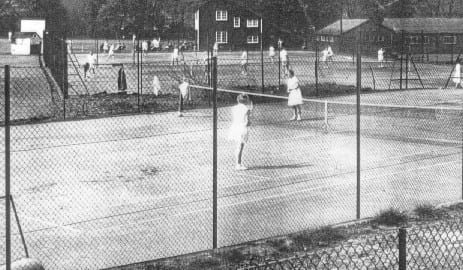Shepherds Cot and the Great War November 2014
Oonagh Gay, club member and badged-guide of Crouch End Walks writes:
On this anniversary date, we should consider the impact of the First World War on the cricket and tennis clubs of Shepherd’s Cot.
When war was declared on the 4 August, the day after a glorious Bank Holiday, when the Cot would have been crowded with players and spectators, it would have seemed very unreal. No one was to know that the conflict would be the most bloody ever fought, turning into four years of total war.
The death rate of the young men who would have made up the bulk of the members of the Cot clubs was exceptionally high, as a large proportion would have become junior officers, who suffered disproportionally heavy casualty rates. The borough of Hornsey was mainly composed of middle class households, with young families and adult lodgers. The public school of Highgate and a number of private schools in Crouch End and Muswell Hill was fertile ground for officer recruitment. Those who died in the war tended to come from the most prominent families in the area. The two main developers of Crouch End and Muswell Hill, James Edmondson and William Collins, both lost sons to the conflict. Hardly any local family was untouched.
Hornsey at war was a rather bleak environment. There were blackouts, strictly controlled pub licensing hours, and the internment of thousands of enemy aliens in Alexandra Palace, whose park was closed to the public. Lewcock’s Field, next to Priory Lane Pleasure Gardens was dug up for allotments. Potatoes and coal were in very short supply. Auxiliary hospitals housed wounded and mutilated soldiers, who took months to recover, or to die.
A history of Highgate Cricket and Lawn Tennis Club, written for its 50th anniversary in 1929, records how only one team could be fielded throughout the war years
It notes : “The difficulties to be faced and conquered were in themselves testimony to the sacrifice and patriotism of the members who, when they returned home on leave, resorted to the enclosure of the Highgate Cricket Club and found there needed rest, rest, recreation and above all welcome.”
The Highgate history refers to creation of a Roll of Honours of members who died, to be found in the Pavilion. Sadly, like so many of these memorials, its whereabouts are now unknown.
So let us remember Bert Richardson of Woodland Gardens N10 and Jim Whitehead of Elder Avenue N8, members of Highgate. They had just left school and enlisted in 1914 in the London Rifle Brigade an elite regiment, where a joining fee applied. Jim’s letters were published privately by his family as Jottings and other Letters in 1917 and are held at the Imperial War Museum. Jim took part in the famous Christmas Day football match, as part of the festive truce in the winter of 1914. After the spring 1915 offensives Whitehead’s letters turned sombre in tone, particularly after Bert’s death at Ypres.
Whitehead’s name is recorded on the Hornsey War Memorial, outside the medical centre in Park Road, just five minutes away. Look at panel 41 near the window seat of the memorial, where you will find Jim listed under 5th London Rifle Brigade. Richardson’s body was never found and is recorded on the Menin Gate in Ypres.
The Hornsey Journal recorded at the opening of the Memorial that the names of the dignitaries at the ceremony would be long forgotten, but the names of the fallen would be remembered forever. Take a moment to look in at the Memorial when you are next on your way to the Cot.
During the twenties and thirties the Memorial would have been a prominent feature of Hornsey life as it formed part of an extension to the 1910 cottage hospital.
Thanks to Hornsey Historical Society for research in Bulletin no 55 (2014).


